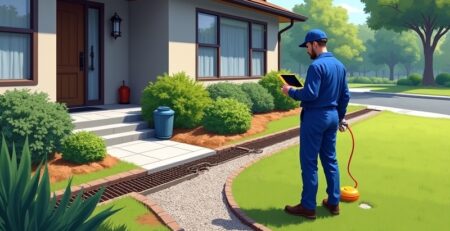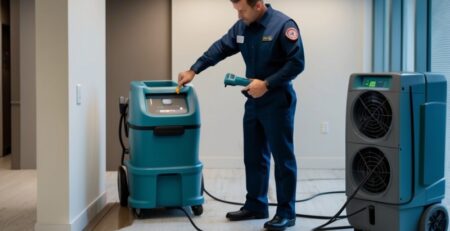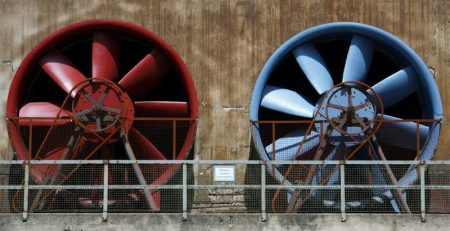Understanding the Different Types of Mold
Mold is a common issue that many homeowners face, yet understanding the different types of mold and their potential impacts can be challenging. At Kraus Restoration, NJ’s leaders in water, mold, and fire damage restoration, we recognize the importance of being informed about mold varieties to protect your home and health. Mold can thrive in damp environments and can lead to serious health issues if left untreated. From allergenic molds that can trigger respiratory problems to toxic molds that pose significant health risks, each type has its own characteristics and implications. Our IICRC certified experts are here to provide you with the knowledge and services you need to address mold concerns effectively. Whether you’re dealing with a minor issue or a major infestation, Kraus Restoration offers 24/7 emergency services and rapid response to ensure your home remains safe and healthy. Serving Central and Northern NJ, we are just a call away at (973) 886-2021. Understanding the different types of mold is the first step in effective mold remediation and prevention.
What is Mold and Why is it Important to Understand It
Mold is a type of fungus that thrives in damp, warm environments, and it plays a crucial role in the ecosystem by breaking down organic matter. However, understanding mold is essential for several reasons, particularly in residential and commercial settings. Mold can pose serious health risks, including respiratory issues, allergic reactions, and other health complications. According to the Environmental Protection Agency (EPA), “mold can trigger asthma attacks and other respiratory problems.”
Recognizing the different types of mold is vital for effective remediation and prevention. Common types include:
- Aspergillus: Often found in homes, it can cause allergic reactions and respiratory issues.
- Cladosporium: This mold is typically found outdoors but can also grow indoors, leading to health problems.
- Stachybotrys (Black Mold): Known for its toxic properties, it can cause severe health issues and requires professional removal.
Understanding mold not only helps in maintaining a healthy living environment but also protects property from damage. Mold can weaken structures and lead to costly repairs. For more information on mold cleanup and prevention, visit our mold cleanup services or learn about our water cleanup services. For any inquiries, feel free to contact us.
Common Types of Mold Found in Homes
Mold is a common issue in many households, and understanding the various types can help homeowners identify and address potential problems. The most prevalent types of mold found indoors include Aspergillus, Cladosporium, and Stachybotrys chartarum, commonly known as black mold.
Aspergillus is a versatile mold that can thrive in various environments, often found in damp areas like bathrooms and basements. It can produce allergens and mycotoxins, making it a health concern. Cladosporium, typically appearing as green or black spots, is often found on fabrics and wood. While it is less toxic than some other molds, it can still cause allergic reactions and respiratory issues.
Stachybotrys chartarum, or black mold, is notorious for its potential health risks, including respiratory problems and other serious conditions. It usually grows in areas with high moisture, such as water-damaged walls or ceilings.
To effectively manage mold issues, it’s essential to address moisture problems promptly. For comprehensive solutions, consider professional mold cleanup services that can help restore your home to a safe environment. Additionally, learning more about mold prevention strategies can further protect your living space. If you suspect mold growth, don’t hesitate to contact a professional for assistance.
Health Risks Associated with Mold Exposure
Mold is a common environmental concern that can pose significant health risks to individuals exposed to it. Various types of mold thrive in damp and humid conditions, often found in homes and buildings. When mold spores are inhaled or come into contact with the skin, they can trigger a range of health issues, particularly in sensitive populations such as children, the elderly, and those with pre-existing respiratory conditions.
Exposure to mold can lead to allergic reactions, including sneezing, runny nose, and skin rashes. More severe reactions may occur in individuals with asthma or compromised immune systems, potentially resulting in respiratory infections or chronic lung conditions. Certain molds, such as Stachybotrys chartarum (commonly known as black mold), produce mycotoxins that can cause serious health problems, including neurological issues and long-term respiratory damage.
To mitigate these risks, it is essential to address mold growth promptly. Regular inspections and maintenance can help prevent mold infestations. If mold is discovered, professional mold cleanup services are recommended to ensure safe and effective removal. Understanding the different types of mold and their associated health risks is crucial for maintaining a healthy living environment. For more information on mold prevention and remediation, visit our about page or explore our services.
Identifying Mold: Visual Signs and Smells
Mold can pose significant health risks and structural damage to your property, making it essential to recognize its presence early. Identifying mold often begins with visual signs. Look for patches of discoloration on walls, ceilings, and floors, which can appear in various colors, including black, green, or white. Mold typically thrives in damp, humid environments, so areas like bathrooms, basements, and around plumbing fixtures are common hotspots.
In addition to visual cues, mold emits a distinct musty odor, often described as earthy or damp. This smell can be a strong indicator of mold growth, even if it is not immediately visible. If you detect a persistent odor in your home or business, it may be time to investigate further.
Understanding the different types of mold is crucial for effective remediation. Some molds are relatively harmless, while others can produce mycotoxins that pose serious health risks. If you suspect mold in your property, it’s advisable to consult professionals who specialize in mold cleanup to assess the situation and recommend appropriate actions. Regular inspections and maintenance can help prevent mold growth, ensuring a safe and healthy environment. For more information on our services, visit our services page or contact us for assistance.
How Mold Grows: Conditions and Environments
Mold is a type of fungus that thrives in specific conditions, making it essential to understand how it grows to effectively manage and prevent its spread. Mold spores are ubiquitous in the environment, but they require certain factors to develop into visible colonies. The primary conditions for mold growth include moisture, warmth, and organic material. High humidity levels, often exceeding 60%, create an ideal environment for mold to flourish. This is why areas prone to water damage, such as basements and bathrooms, are common sites for mold infestations.
Temperature also plays a crucial role; most molds prefer temperatures between 77°F and 86°F (25°C to 30°C). Additionally, mold feeds on organic materials like wood, paper, and fabric, which are often found in homes and buildings. When these conditions are met, mold can grow rapidly, sometimes within 24 to 48 hours after water exposure.
To combat mold growth, it is vital to maintain low humidity levels and ensure proper ventilation in your home. Regular inspections and prompt remediation of water damage can significantly reduce the risk of mold infestations. For professional assistance, consider exploring our mold cleanup services or learn more about our company and its commitment to restoring safe environments. If you have any questions, feel free to contact us.
Preventing Mold Growth in Your Home
Mold growth in your home can lead to serious health issues and structural damage. Understanding how to prevent mold is essential for maintaining a safe and healthy living environment. Mold thrives in damp, humid conditions, so controlling moisture is key. Start by ensuring proper ventilation in areas prone to humidity, such as bathrooms and kitchens. Use exhaust fans and open windows to reduce moisture levels.
Regularly inspect your home for leaks in roofs, pipes, and windows, as these can create ideal conditions for mold. If you notice any signs of water damage, address them promptly. Additionally, consider using a dehumidifier in particularly humid areas to keep moisture levels in check.
It’s also important to maintain cleanliness in your home. Regularly clean and dry areas that are prone to moisture, such as shower curtains and bathroom tiles. If you have experienced water damage, it’s crucial to seek professional water cleanup services to ensure thorough remediation.
Lastly, if you suspect mold is already present, do not hesitate to contact a professional mold cleanup service to assess and address the issue effectively. By taking these proactive steps, you can significantly reduce the risk of mold growth in your home.
When to Seek Professional Help for Mold Issues
Mold can be a serious issue in homes and buildings, and knowing when to seek professional help is crucial for maintaining a safe environment. While some minor mold problems can be addressed with DIY methods, there are specific situations where professional intervention is necessary. If you notice extensive mold growth, particularly in areas larger than 10 square feet, it’s advisable to contact experts. Mold can spread rapidly and may indicate underlying moisture issues that require specialized attention.
Additionally, if you or anyone in your household experiences health problems such as respiratory issues, allergies, or skin irritations that worsen in the presence of mold, it’s essential to seek professional help. Mold can release spores and mycotoxins that pose health risks, especially to vulnerable individuals such as children, the elderly, or those with pre-existing conditions.
If you suspect mold is hidden behind walls or in hard-to-reach areas, professionals have the tools and expertise to conduct thorough inspections and mold cleanup. They can also identify the source of moisture and implement effective remediation strategies. For more information on how to protect your property from mold and ensure a healthy living environment, consider reaching out through our contact page or explore our services for comprehensive solutions.
In conclusion, understanding the different types of mold is essential for maintaining a healthy living environment. Mold can vary significantly in its appearance, growth patterns, and potential health effects, making it crucial to identify and address specific types promptly. By familiarizing ourselves with common molds such as Aspergillus, Penicillium, and Stachybotrys, we can better recognize the signs of mold growth and take appropriate action to mitigate risks. Regular inspections, proper ventilation, and moisture control are key strategies in preventing mold infestations. Ultimately, being informed empowers us to protect our homes and loved ones from the potential dangers of mold, ensuring a safer and healthier space for everyone. Remember, when in doubt, consulting a professional can provide peace of mind and effective solutions for mold-related concerns.








